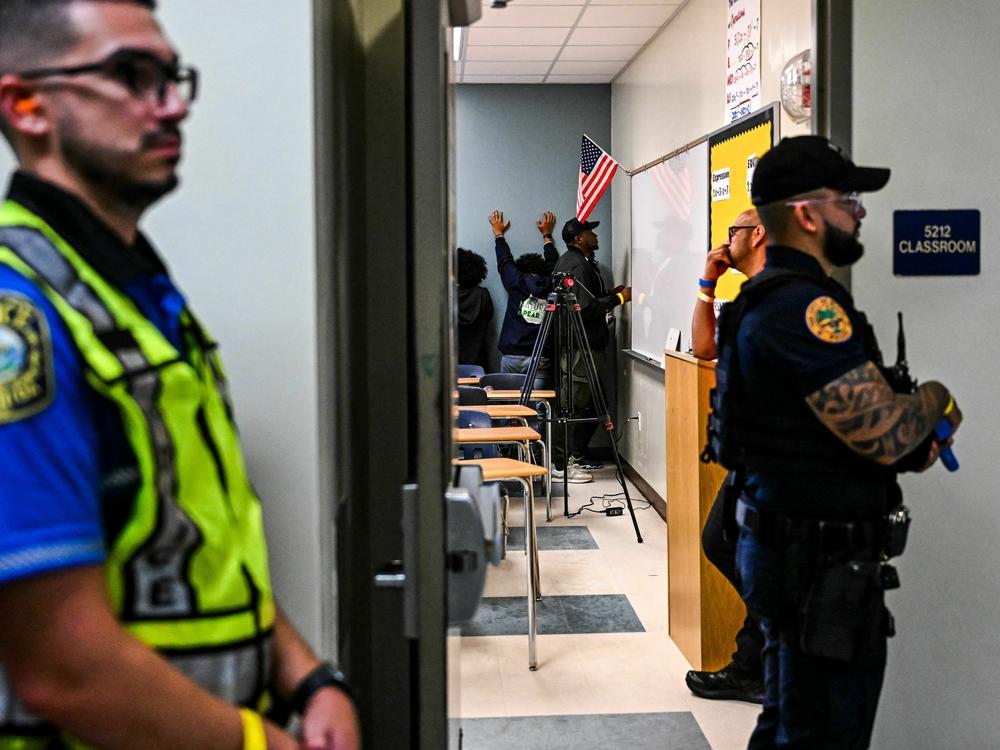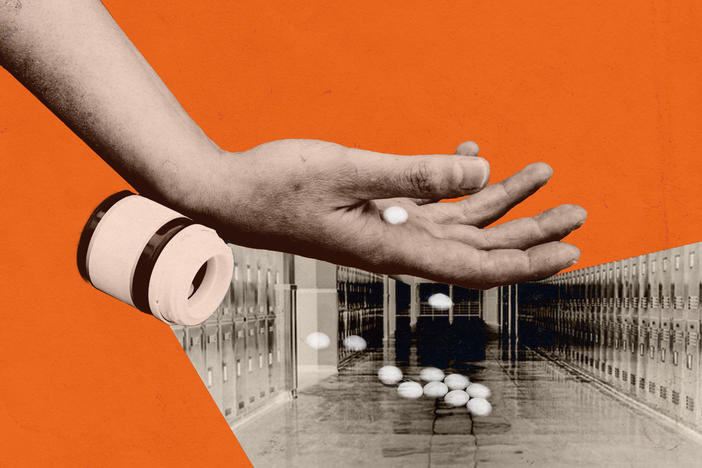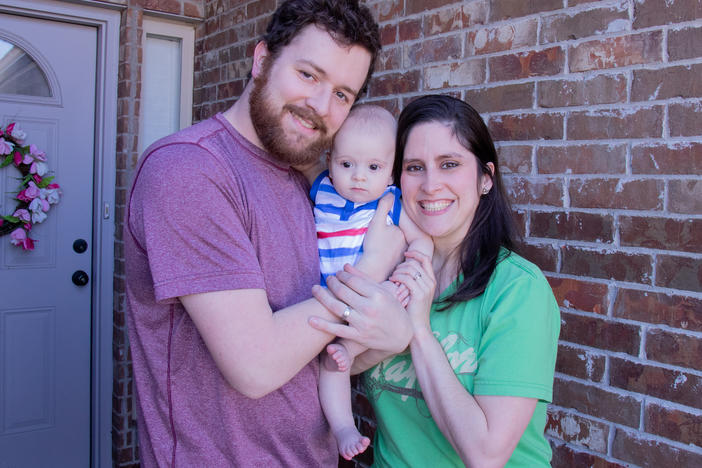Loading...
Football Fridays Game of the week | Playoffs Rd 2- Lowndes at Buford - At 7:30 P.M.
Section Branding
Header Content
'No one wants kids dying in schools,' but Americans disagree on how to keep them safe
Heard on
Primary Content
An overwhelming majority of Americans want children to have active shooter drills in school, but a new NPR/Ipsos poll finds that they differ on how to conduct them, and what safety measures to invest in.
Both parents and the general public at large agree that gun violence is one of the top concerns around K-12 education, the poll found. But their views on how to approach the issue diverge starkly along party lines.
"You see this really deep partisan divide that has sort of crystallized here," Mallory Newall, a vice president at Ipsos, says. "On the type of investment and the type of priority that we should have when it comes to school safety."
The survey examined three different measures to keep children safe at schools: social and emotional measures, security measures, and training measures.
According to the data, Democrats are more inclined (65% to 38%) to support investing in social and emotional measures to enhance school safety over expanded security measures. Respondents favored approaches like guidance counselors, anti-bullying campaigns, and increased mental health education. While those who identified as Republican strongly favored (60% vs. 30% of Democrats) expanded security measures, like metal detectors, bulletproof glass, and clear backpacks over social and emotional measures.
The third, less popular option, was whether they support investing in training measures: "So that's training teachers to carry guns," explains Newall.
"Very few Americans are aware of that happening in their community," she says. "And when you ask them if they support training teachers to carry guns in schools, about 4 in 10 Americans are in favor of that."
A new phenomenon for parents
One thing consistent across party lines was the uptick in active shooter drills over the past two decades. The NPR/Ipsos poll tracked the rise of the practice as mass shootings at schools have become a frequent and tragic part of the education landscape:
More than half the respondents who are parents of students in K-12 right now (55 percent) said active shooter drills have occurred at their child's school, while fewer than 1 in 10 say they personally experienced one during their own education.
Carla Nardoni, a parent of two children – one in middle school and one in high school – in southern California, says that even though her kids attend school in the same city she did, their experiences around gun violence have been vastly different.
"I went to school in L.A. in the early '90s, and they did have metal detectors and they did search our bags for weapons," she recalls. But she doesn't remember ever having an active shooter drill. They had one emergency lockdown, during the LA riots in 1992. She remembers feeling overwhelmed as the school ushered all the students into the auditorium.
Alternatively, her kids have had lockdown drills every year since kindergarten: "They're kind of apathetic about it," she says. "They think it's awful and they don't understand why it's this way, but it is just so normal. They don't get really worked up about it."
The small sliver of parents surveyed who did have experience with active shooter drills said they attended school after the April 1999 shooting at Columbine High School in Colorado, in which two students murdered 12 students and one teacher before taking their own lives.
Banging on classrooms, gunshots, and fake blood
An overwhelming majority of Americans (roughly 80 percent) say they believe that active shooter drills in schools should be both evidence-based and age-appropriate. With that in mind, 63 percent said they want children to be required to participate in at least one active shooter drill each year.
Differences appear when it comes to how to conduct these drills.
In some schools around the country, administrators go for a realistic simulation, with some drills involving things like the simulated sound of gunshots, banging on classroom doors, or the use of fake blood.
Some other drills place more of an emphasis on a lockdown procedure: Shutting off lights, keeping students silent, and blocking classroom doors.
The poll asked parents and the public their views on these approaches. "A vast majority of parents, and American adults alike, are in favor of practicing basic lockdown procedures in schools, almost 9 in 10," Newall says. "However, as you get into ... the more graphic options, support drops."
Only about 1 in 3 Americans and parents say that they support the use of sounds of guns or gunshots during an active shooter drill in schools.
Amy Klinger, the founder and director of programs for the nonprofit Educators School Safety Network, says focusing on how to scare kids ignores the root of the problem.
"Rather than coming up with a comprehensive solution, we have said, 'If we only had more counselors, we would have no more shootings. If we only had no more guns, we would have no more shootings, if we only had everybody armed in school.' " But, she adds, "none of those things are correct."
Instead of focusing energy on realistic simulations, which she says can sometimes be traumatizing for students, her organization proposes moving to a more balanced approach to school safety: "For every dollar you spend on response, you spend equal amounts of time and effort on prevention."
Carla Nardoni agrees. "I definitely want both," she says.
At the end of the day, protecting the lives of students is not only a safety issue, but also a deeply emotional one, she adds. "I never, ever let my children leave the house without saying "I love you" and that's the reason why."
Copyright 2023 NPR. To see more, visit https://www.npr.org.
Bottom Content




